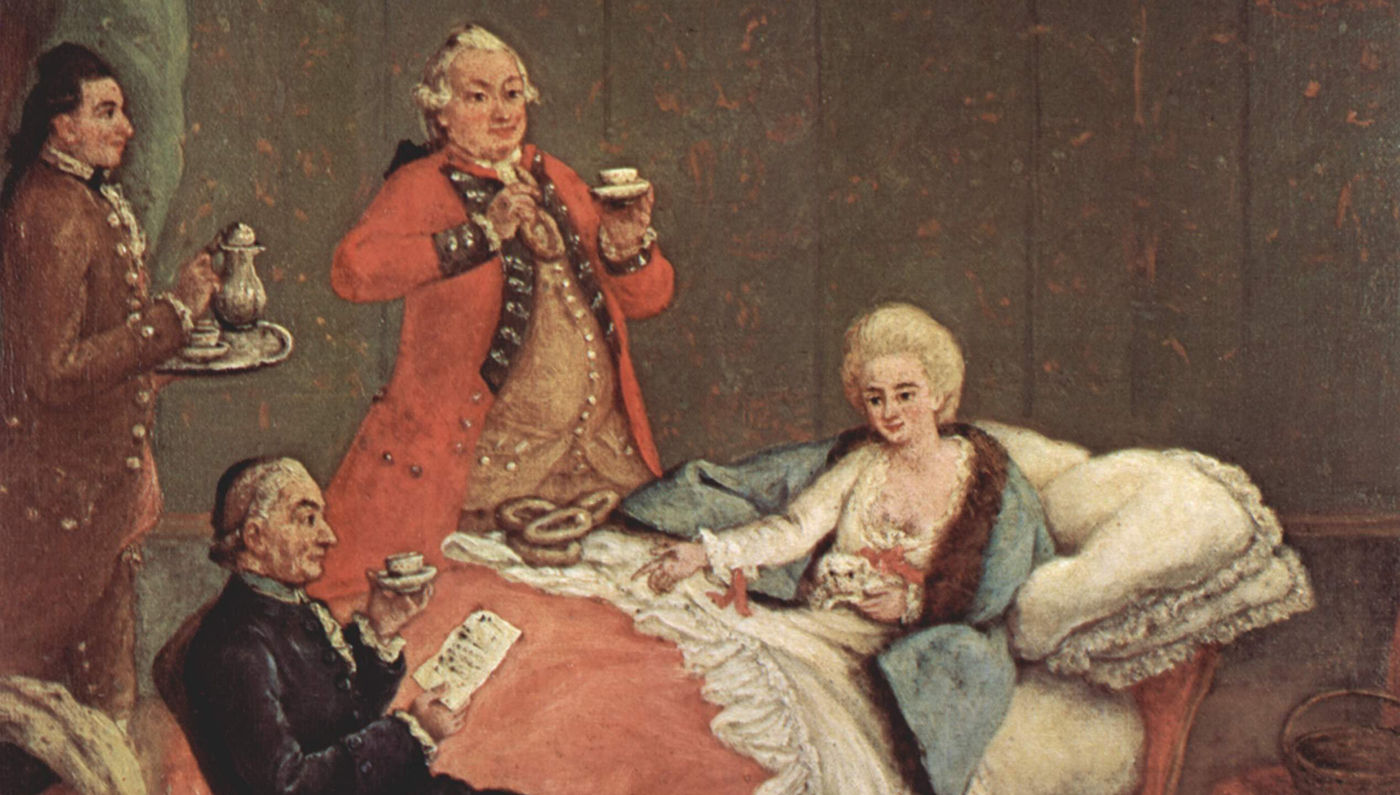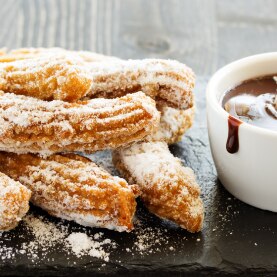The history of chocolate
These days, a cup of hot chocolate before bed may not seem all that unusual, but this has not always been the case. When the Spanish brought cocoa to Europe from the Americas it aroused great interest and stirred up much debate. Above all, it became a huge craze with the aristocracy and the more privileged classes of society.
From the Aztecs to the Spanish conquistadors
Drinking chocolate was the first exotic drink to arrive in Europe, yet had been consumed by different populations of the Americas for thousands of years. When the Spanish arrived, the Aztecs already held it in high esteem. They drank it flavoured with chilli, maize and fruit during religious ceremonies and on festive occasions. Its therapeutic properties were also well-known: cocoa was considered to be fortifying and aphrodisiac, while cocoa butter was used to treat burns and injuries. The beans were used as a currency to buy food, clothes and slaves.
The conquistador Hernan Cortés and his men landed in Mexico in 1519. They discovered a strange looking drink with a surprising bitterness; it tasted better when agave syrup (a natural sweetener) or honey was added. Cortés realised the benefits he could reap with this remarkable drink and returned to Spain in 1528 with some cocoa beans and the equipment necessary for its preparation. Drinking chocolate received a mixed reception at the court of Charles I of Spain and it took a few more decades before it was really accepted. This was helped by the fact that, in the meantime, a group of nuns, doing missionary work in Mexico, had the ingenious idea of sweetening it with sugar. By the end of the century, chocolate had become a highly-prized beverage in Spain. It was consumed everywhere, even in the street and at any time of day.
Europe falls under the spell
Following in the footsteps of Spain, the other European countries discovered chocolate during the 17th century and became totally fascinated by this completely new drink. The aristocracy and the clergy were swept off their feet by an absolute ‘chocomania’. Chocolate was more expensive than tea or coffee and remained a luxury product for a long time. It became very fashionable among the privileged classes and was savoured for breakfast, enjoyed throughout the day or offered as refreshment during society events and informally between friends. Its reputation as an Aztec aphrodisiac persisted and many people associated chocolate with exquisite pleasure. In 1702, a doctor wrote that, “Chocolate's properties are such that they stimulate Venus' ardour”. This explains why, for a long time, this beverage was considered appropriate for adults only.
The chocolate debate
This new beverage was the subject of much discussion. The church was keen to establish whether it was food or a drink and consequently whether it could be consumed during Lent and would not break the fasting. Medical opinion varied. For some doctors, chocolate was harmful and upset digestion. Most, however, praised its remedial properties and recommended it for stomach aches, digestion, coughs, fever and dizziness. It could be enjoyed at the end of the meal, like coffee or tea.
Unexpected consequences
Madame de Sévigné, having initially been seduced by chocolate, expressed a different opinion in a letter to her pregnant daughter on 25 October 1671: “The Marquise de Coetlogon drank so much chocolate when she was pregnant last year that she gave birth to a little boy as black as the devil, who died.” At that time, it was also very fashionable to employ servants of African origin...
CONSTANT, Christian, 1999. Du chocolat discours curieux. Paris : Éditions Ramsay.
KHODOROWSKY, Katherine et ROBERT, Hervé, 2009. Tout sur le chocolat. Paris : Odile Jacob.
HUETZ DE LEMPS, Alain, 1996. Boissons coloniales et essor du sucre. In : FLANDRIN, Jean-Louis et MONTANARI, Massimo, 1996. Histoire de l’alimentation. pp 631-634. Paris : Fayard.
FUMEY, Gilles, 2013. Le roman du chocolat suisse. Pontarlier : Éditions du Belvédère.
DE CONTENSON, Elisabeth, 2010. Le chocolat et son histoire. Paris : Archives & Cultures.







